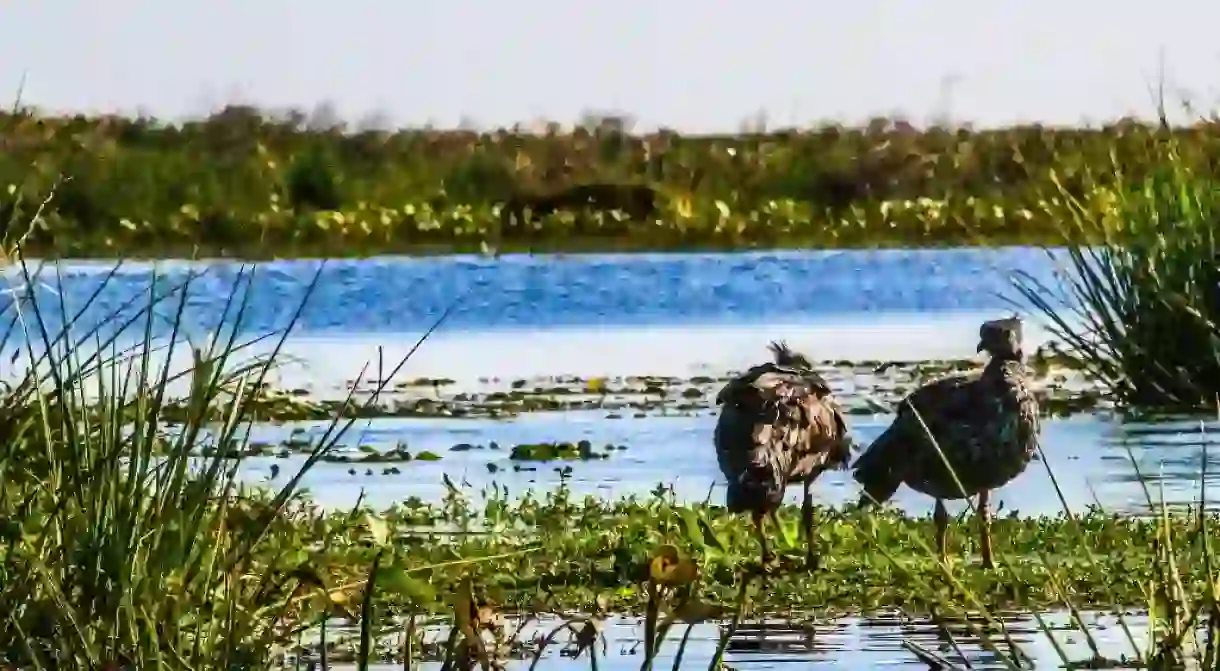The Ultimate Guide to Exploring the Ibera Wetlands, Argentina

As the second largest marshlands in the world (beaten only by Brazil’s Pantanal), Argentina’s Ibera Wetlands are teeming with fascinating fauna which makes them a must for any wildlife enthusiast in the region. Best of all, despite being located between Buenos Aires and Iguazu, few tourists travel the rough unpaved road to get here meaning it’s an off the beaten track experience that is destined to impress. Here’s our guide to the region.
Getting there
The primary hub for exploring Ibera is the lakeside village of Carlos Pellegrini, a quaint little tourist town full of sleepy estancias and travel agencies. Most travelers arrive by taking a long distance bus from Buenos Aires or elsewhere in the country to the city of Mercedes, then jumping on the next two-hour connection to Carlos Pellegrini.
Those who prefer to travel by air will find the nearest airport at Posadas, from which a scarcely traveled four-hour road leads to town.

Stay
Budget: The no-frills Posada Jasy offers budget travelers clean and serviceable dorm rooms, a filling breakfast, and a pleasant outdoor patio space with ample hammocks to kick back and relax in.
High end: For a luxurious estancia (country lodge) right in the heart of the wetlands, it’s hard to go past Rincón del Socorro. This elegant whitewashed estate is packed full of polished wood and leather trimmings, a true shout out to the regional gaucho style. Better yet, its inviting outdoor pool is the perfect spot to cool off after a tough day exploring the marsh.
A post shared by Rincon del Socorro (@rincondelsocorro) on Jun 26, 2017 at 4:21am PDT
Wildlife
Covering an area almost the size of Switzerland (some 13,000 square kilometers (5,019 square miles), to be precise), the swamps, lagoons, lakes, and bogs of Iberá boast the most diverse array of wildlife in the country. Expect to come across two different species of alligator, deer, giant otter, countless capybara or even anaconda and monkeys. Birders will rejoice in the more than 350 different species that call the marsh home, each as colorful as the next.

See and Do
A walk from the edge of town to the office at the park entrance provides a nice opportunity to see the wetlands on foot and is particularly picturesque come sunset. Upon arrival, there is a marked treelined trail that passes through some friendly families of howler monkeys.

A fun independent way to explore the park is on a kayak and rentals can be arranged for 300 ARS (US$15) for up to three people per hour. Obviously, you won’t see as much wildlife this way, but it’s still a nice experience for those who really wish to get away from it all.
The best way to see fauna is by boat, allowing a skilled guide to show you the most wildlife-rich areas in the region. There are two spots to choose from – the southwest and the southeast – which take about three hours each to explore and both of which are entirely worthwhile if time permits.

Another great alternative is to jump on a horse riding tour through the forests and swamps that are scattered throughout the park. Tours require an obligatory guide which means they are suitable for both expert and beginner riders alike.













